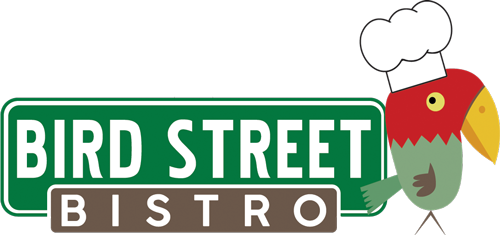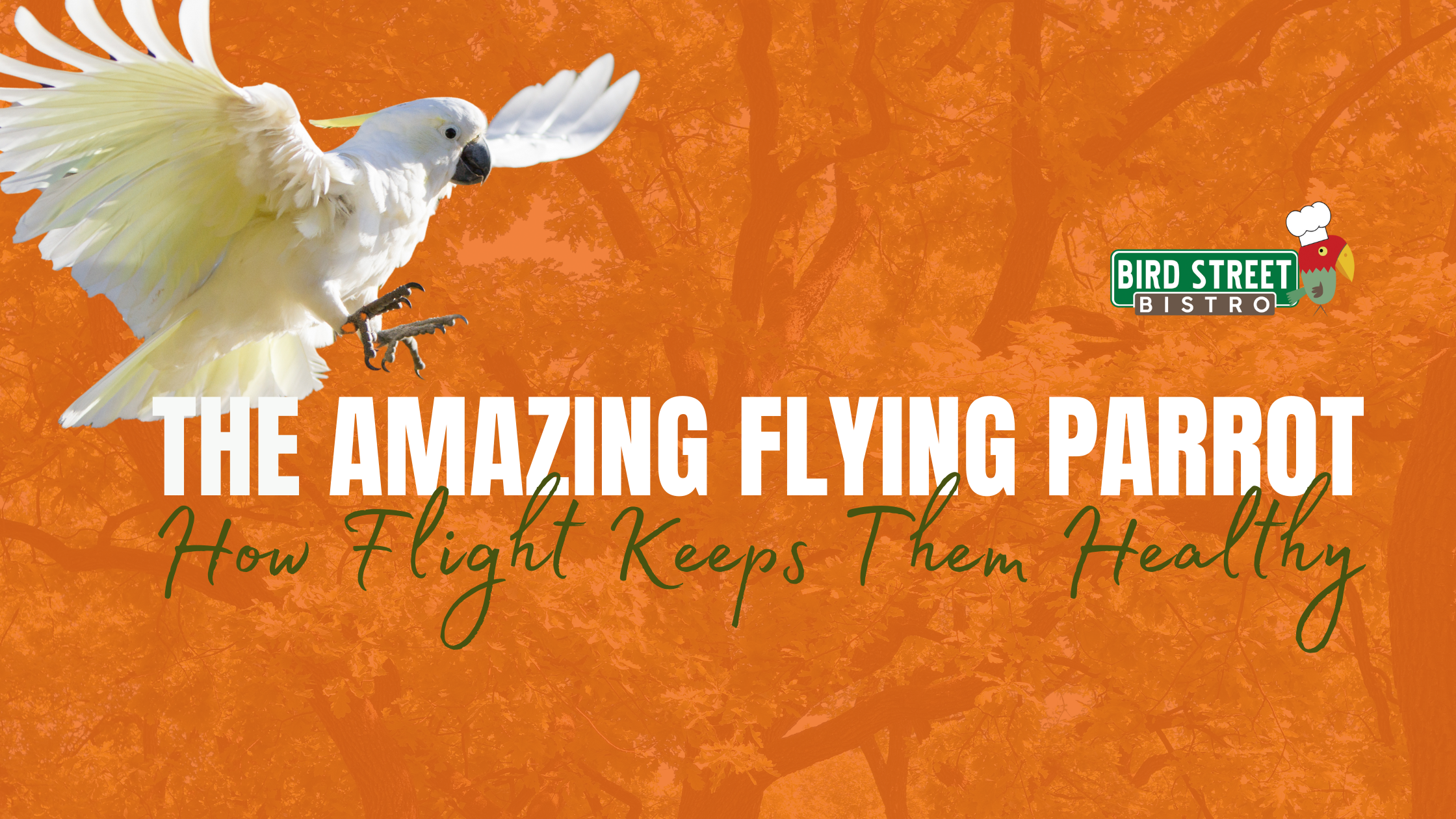The Amazing Flying Parrot and The Benefits of Flight
Like with other birds, parrots have evolved to be masters of the sky. Flight is important for parrots’ bodies which are specifically engineered to be able to do it. But it is also important for their mental wellbeing. Flight means the ability to not only get around and get exercise, but to also be able to escape perceived dangers which gives a bird a sense of security and control. Without the ability to fly, a bird would likely feel helpless and be much more likely to live a shorter life.
However, sometimes clipping is necessary due to medical or other issues. Flight is important for health, but every parrot should be treated as an individual with their specific needs in mind.
The Parrot’s Wings

Parrots have different kinds of feathers on their bodies. Contour feathers are what cover most of the outer part of a parrot's plumage and make up most of the feathers that you can see. Contour feathers also make up the flight and tail feathers. They consist of a long, central stalk with barbs on the sides. Contour feathers are also water-resistant thanks to the bird preening them by using an oil from their uropygial gland which is located just above the tail.
Feathers on a bird's wings, the flight feathers, help the bird by providing thrust and lift. The specialized structure of these feathers also allows them to withstand the force of rushing air while the bird is flying. The feathers on a bird’s tail help it to control flight as well as to take off and land. They also aid in acceleration and help the bird slow down. As a bird is accelerating, it reduces its tail's angle depending on airflow. When it is flying slower, it may spread its tail more widely and lower it in the relevant direction. During landing, a bird will fan out its tail and angle it before its feet grasp the landing area.
Skilled Flyers

There’s a lot more to flight than simply staying in the sky. Parrots have to be skilled in taking off, landing, maneuvering, and keeping their feathers healthy. Baby birds are born with bodies that make flight possible, but it is only through practice and experience that they grow up to be skilled flyers. That’s why an older bird that has been clipped will not be as good of a flier as one that is younger yet fully flighted but has had that experience. As an article titled The Facts on Fully Flighted Budgies for The Budgie Academy run by Dr. Amy Zhao explains that young birds, “they have an instinct to flap in order to strengthen their muscles and learn to coordinate their flying. This is a crucial learning period in their life where they discover that their wings can provide them with lift, act as their main means of transportation, and allow them to escape from danger.” It is important for birds to be able to go through this process and learn to use their space and environment to hone their flying skills. However, if a bird never got the chance to practice flight as a baby, it can still learn to fly later in life.
Parrots can maneuver through the sky and their environment in impressive ways. Imagine a flock of budgies for a moment. There can be many, many individual birds in a flock flying and landing at the same time. It takes precision and a great deal of maneuverability to keep from crashing into others or landing on top of someone. There have been sightings of large groups of budgies gathered around water sources - up to about 15,000! So, being able to control flight and landing is important. It is also vital that a bird be able to quickly escape danger and fly in a way that allows them to elude predators.
Flight, Health, and Wing Clipping
Bird's bodies are designed for flight. By doing what their bodies evolved to do, they can maintain their health and live longer happier lives. Flight provides exercise, the ability to explore and experience the world around them, and gives a bird the security they need to escape danger.
Unfortunately, when humans started keeping parrots as pets, the practice of wing clipping became normalized and encouraged. However, studies have shown that birds that are allowed to fly are healthier and live longer lives. They are also more confident and less likely to display behavioral issues. A bird that is fully flighted gets markedly more exercise than one that is not. A parrot in the wild requires a lot of calories in order to fly. Larger caloric intake is not a problem because they are flying all day, foraging, and doing other physical activities. Birds that are in our homes require fewer calories and fat. But they still need an adequate amount to support their energy levels. A bird that is not allowed to fly, yet is still taking in the amount of calories that a bird that is flighted takes in will not have the correct balance of calories in their diet versus the needs of the energy they will use. This can cause health issues which can lead to illness and often a shorter life.
Birds that are not allowed to fly have also been shown to display more behavioral issues such as fear, aggression, and undesirable vocalizations. Many owners will describe their birds as “screaming” nonstop or biting often. While many things can cause behavioral issues, a bird that is allowed to fly is less likely to have them. A study that was conducted to estimate the prevalence of feather-damaging behavior found that “wing clipping significantly increased the odds of FDB (feather-damaging behavior)” Flight allows for independence and security. Having flight feathers also helps with balance and movement. By taking them away, we are likely creating a more insecure bird. Independence and the ability to have control over their safety are important for intelligent animals like parrots.
All of this being said, the decision to clip a bird’s wings should always be made alongside an avian veterinarian.
To help support your parrot's nutritional needs and health browse through some of our products here at Bird Street Bistro. We offer a delicious, healthy range of foods like our Green Goodness Boost - Parrot Veggies Mix!
References:
Frabotta, Isabel. “The Facts on Fully Flighted Budgies.” The Budgie Academy, 1 July 2023, www.thebudgieacademy.com/fully-flighted.
Harcourt-Brown, Nigel. “Anatomy and Physiology of Parrots .” ResearchGate, www.researchgate.net/publication/368873502_Chapter_2_Anatomy_and_physiology_of_parrots.
Mahdavi, Iman, et al. “Prevalence and risk factors of feather damaging behavior in companion parrots: A cross-sectional study in Iran.” Applied Animal Behaviour Science, vol. 266, Sept. 2023, p. 106028, https://doi.org/10.1016/j.applanim.2023.106028.
- Choosing a selection results in a full page refresh.
- Press the space key then arrow keys to make a selection.


